Psychology of Packaging Design: How It Influences Consumer Behavior
By Anttoni Taimela · 14. March 2024
How exactly does subtle psychology🧠 of packaging design influence our buying decisions?
This article navigates the psychology of packaging design, pinpointing how it captures attention and persuades consumers.
Expect insights on the strategic use of design elements that lead to that ‘must-have’ feeling, and learn just how much these visual and tactile cues can sway your choice on the shelves.
Key Takeaways
- Packaging is the silent salesman: From colors that tickle your emotions to fonts that speak louder than words, it’s not just about holding a product, it’s about seducing shoppers and whispering ‘take me home.’
- Consistency is queen in the kingdom of brand loyalty: Aligning your packaging with your brand’s mission statement and dress code (a.k.a. style guide) isn’t just smart, it’s essential for playing the long game in customer courtship.
- Eco-friendly packaging is hotter than a compost pile in July: Going green with your packaging is like giving Mother Earth a high-five and, in return, she might just convince environmentally woke consumers to swipe right on your products.
The Science Behind Packaging Design and Consumer Behavior
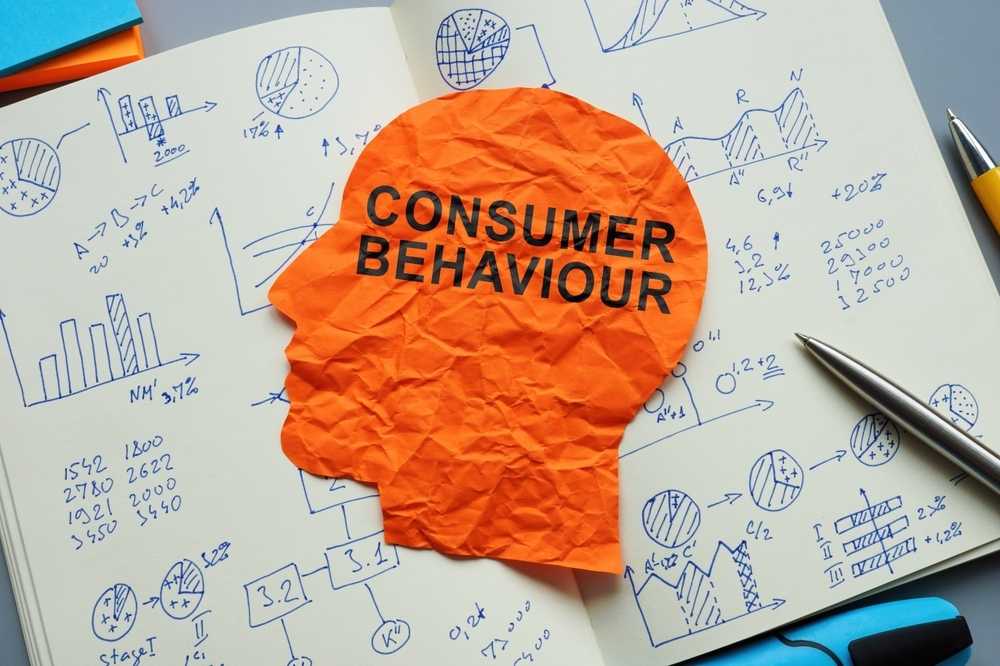 Consumer Behavior
Consumer Behavior
Consider packaging design as a product’s fashionable attire that influences consumer perception of quality and distinguishes it on the shelves of retailers.
Every detail, from color selection to material texture, significantly contributes to enhancing customer experience and fostering trust.
Branded packaging is the unsung hero of brand success, influencing decisions, and even tugging at consumers’ heartstrings.
Studies show that product packaging design can alter perceptions of product quality, stimulate curiosity, and establish a vibe distinct to the brand.
Don’t underestimate the power of a well-designed package, especially in the realm of food packaging, where it serves as the key to winning hearts and minds.
Fascinating, isn’t it?
The Power of Attractive Packaging
Picture this: You’re in a store, and a product with eye-catching packaging grabs your attention.
The allure of attractive packaging works its magic, encouraging you to make a purchase and subtly influencing your buying behavior.
The design elements used in the packaging can make all the difference, swaying impulsive buying decisions and attracting more buyers.
Some key design elements to consider for effective packaging include:
- Color scheme
- Typography
- Imagery
- Logo placement
- Shape and size of the packaging
- Material used
By carefully considering these design elements, you can create packaging that stands out on the shelves and entices potential customers more to choose your product.
Furthermore, appealing packaging can stimulate the reward center in your brain, evoking a sense of striking gold.
The perceived value of a product can be significantly influenced by its packaging design, triggering an urgent need to own it. Now, isn’t that a crafty trick?
Packaging Design’s Impact on Brand Loyalty
Packaging design can be a game-changer when it comes to winning customer loyalty.
By creating a consistent, distinctive, and instantly recognizable package design, brands can capture customers’ hearts and minds.
Take Apple, for example. Their distinctive packaging helps customers cut through the clutter and stay loyal to the brand.
Packaging design, with its color, typography box design, imagery, and messaging, acts like a brand’s personal stylist, reflecting its personality and market position.
It’s about telling the brand’s story, highlighting what makes it special, and forming a deep connection with consumers.
However, blunders like overpackaging and giving a wrong impression of the product can lead to customer annoyance, proving that design matters.
Unraveling the Elements of Successful Packaging Design
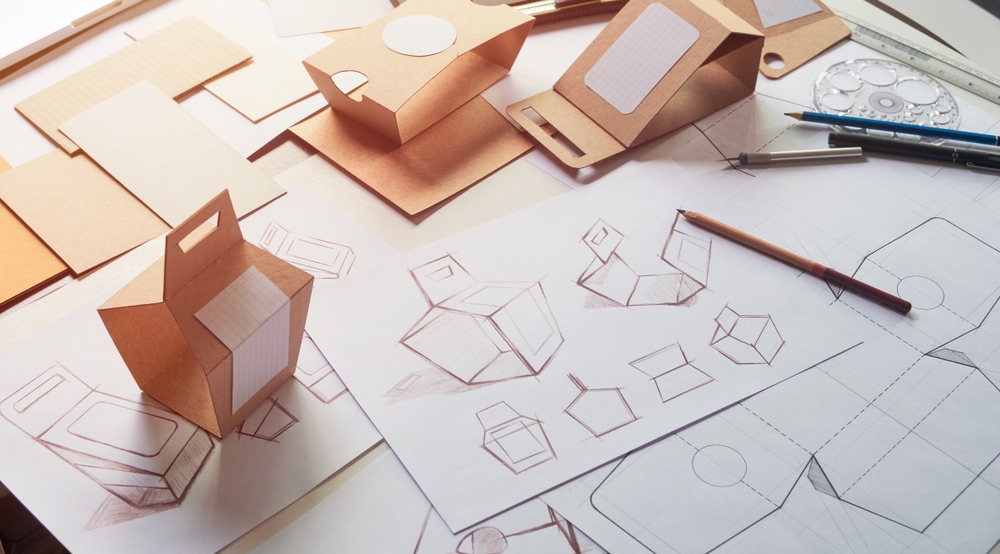 Packaging Design
Packaging Design
As we journey deeper into the realm of packaging design, we discover three key elements that make or break the design: color, shape, and typography.
Each plays a unique role in capturing attention, creating emotional connections, and conveying the brand’s personality.
Let’s delve into each of these elements in more detail.
Color: Capturing Attention and Evoking Emotion
The psychology of color in packaging design is a devious influence on consumer behavior.
It stirs up emotions and perceptions, with each color evoking a specific emotion.
Blues calm us down, reds ignite passion, and greens evoke a feeling of health and relaxation.
Brands can tactfully use these psychological🧠 responses to their benefit by using colors to evoke specific images or emotional responses in consumers.
For instance, red can be used to create excitement, warm colors for passion and energy, and specific shades of blue for a reflective thought calming effect.
It’s like a mood ring for products!
Shape and Structure: Creating Emotional Connections
Beyond colors, shapes in packaging design play a vital role in shaping consumer perceptions.
Round shapes suggest softness and warmth, while sharp angles convey strength and reliability.
These shape associations can form a special bond between the product and the consumer, influencing how people perceive the brand and its values.
Distinctive packaging shapes, such as jars and round boxes, genuinely garner attention.
More than just aesthetics, these shapes can play mind games with consumers’ attention, recognition, purchase likelihood, brand choice, and financial outcomes.
It’s clear that shaping it up can win them over!
Typography: Conveying Personality and Message
Similar to how the right outfit uplifts your confidence, appropriate typography in packaging design can enhance readability and emphasize crucial information.
Easy-to-read fonts like sans-serif and bold fonts like Mortend can help packaging design shine with personality.
Typography is not just about style; it’s about conveying a brand’s message effectively and telling a brand’s story.
Brands have features like:
- Hairy Bikers
- Back Label
- Ms Men
- Pfeiffer wine labels
have that companies aced the typography game, creating designs that communicate their brand’s stories effectively.
It’s clear that a good font choice can speak volumes about a brand.
Enhancing Customer Experience Through Packaging Material and Texture
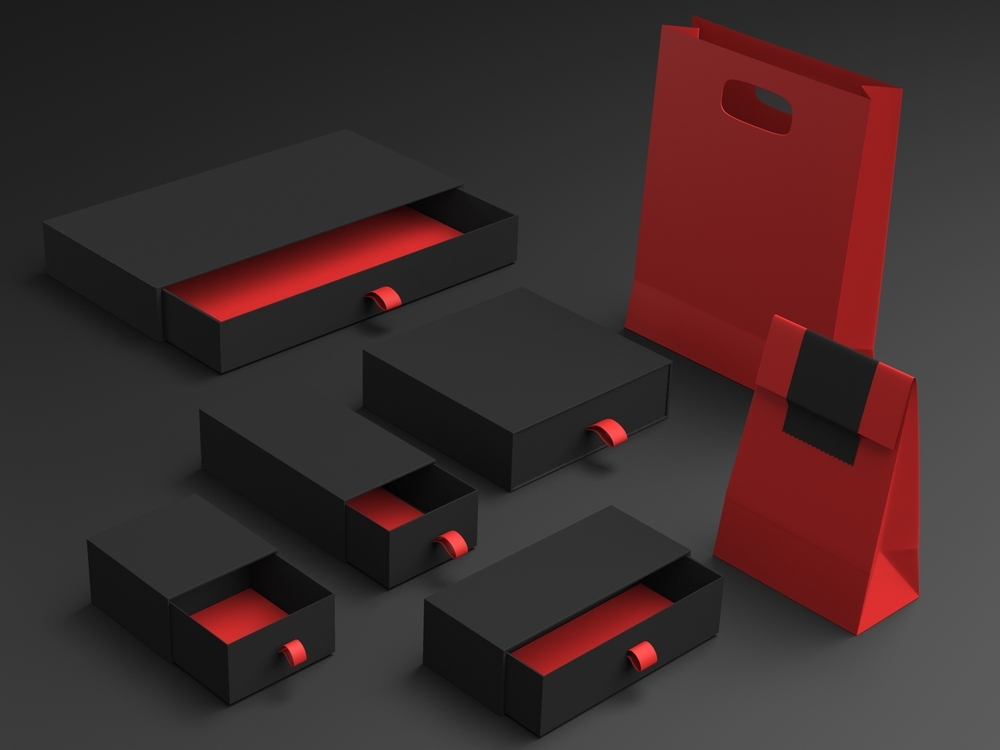 box set of paper bag
box set of paper bag
Packaging design goes beyond visual appeal; it also encompasses tactile experiences.
The material and texture of the packaging play a crucial role in enhancing the customer experience.
From sustainability considerations to interactive elements, the choice of packaging material and texture can align with brand values and create a sense of psychological ownership.
Sustainable Packaging: Aligning with Brand Values
In this age of environmentally aware consumers, sustainable packaging🔄 transcends trends and manifests a brand’s dedication to environmental stewardship.
Such packaging designs boost product visibility, amplify brand identity, and attract eco-friendly shoppers who value transparency and honesty.
The choice to go green is not only good for the environment but also for business.
Sustainable and minimalist design and packaging designs have been boosting sales for specific brands by attracting eco-conscious consumers and giving their sales a nice boost.
It’s like a green badge of honor for brands!
The Role of Touch in Packaging Design
Touch holds significant importance in packaging design. The feeling of a product’s packaging can convey quality and affect how other senses perceive the product.
Fancy materials and embossed textures can amp up the perceived quality, leaving a more lasting impression or positive impression.
The texture of packaging can create a sense of ownership and value, stirring up emotions, and playing tricks on visual perception and judgment of product quality.
It’s like the packaging gives consumers a little taste of the the product inside, before they even open it, making them feel more connected to it.
Crafting a Cohesive Brand Identity Through Packaging Design
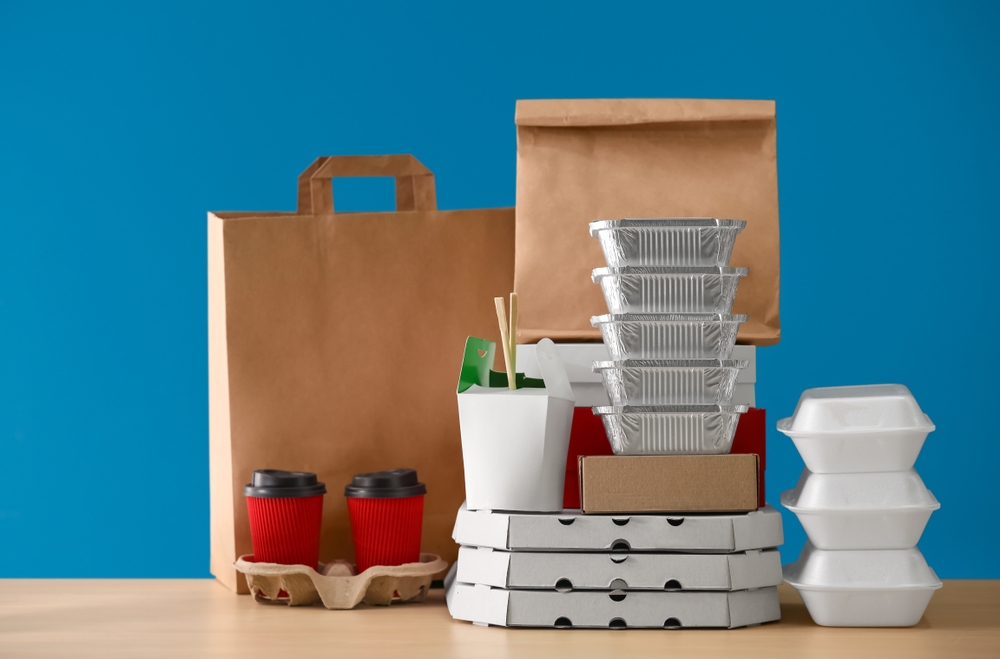 takeaway packaging design
takeaway packaging design
Establishing a unified brand identity via packaging design hinges on maintaining consistency.
Consistent design elements such as color, font, graphics and imagery can strengthen brand recognition and loyalty.
Brands like Coca-Cola, IBM, and Apple have aced the game by incorporating their style guides into their packaging, making their brand stand out in the market.
However, creating a unified brand identity involves more than just consistency.
It also involves tailoring the packaging design to harmonize with the preferences and needs of specific consumer segments.
From demographic considerations to market analysis, every detail counts when it comes to targeting the right audience.
Staying True to Your Style Guide
Adherence to your style guide in packaging design serves as a steadfast compass directing all design decisions.
It ensures that your marketing efforts shine, sets you apart from the competition, and gives your brand some serious oomph.
Consistency in packaging design builds trust, familiarity, and brand loyalty. It’s all about making the brand stand out and be memorable to consumers.
By creating a signature look that people can’t help but recognize, brands can capture customers’ hearts and minds.
Targeting Your Audience with Tailored Packaging Designs
Customizing packaging designs to suit the target audience equates to communicating in their vernacular.
It’s about understanding their wants, needs, and shopping habits and creating designs that click with them.
From the color choices and font choices to storytelling elements in the design, every detail can be customized to resonate with the specific audience.
Brands that have mastered this art have successfully formed a deep connection with their consumers, influencing their purchase decisions and boosting brand loyalty.
Case Studies: Brands That Excel in Packaging Design
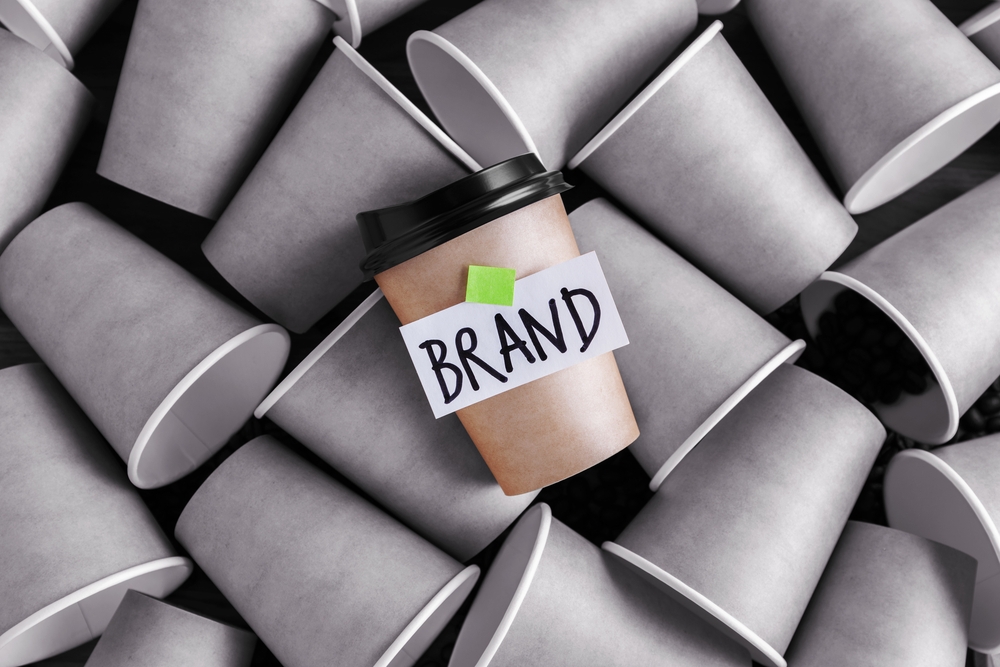 brand packaging
brand packaging
Let’s take a moment to appreciate some real-life examples of brands that have taken packaging design to a whole new level.
From sustainable and minimalist designs to unique and quirky packaging, these brands showcase the power of innovative packaging design in captivating consumers and driving sales.
Sustainable and Minimalist Designs
Sustainable and minimalist packaging designs are like a breath of fresh air in the crowded market.
They reflect a brand’s commitment to environmental responsibility and simplicity, enhancing product visibility, and boosting brand identity.
These designs not only appeal to the growing tribe of eco-conscious consumers but also communicate transparency and honesty.
They show that the brand cares about the environment and is committed to:
- reducing waste
- promoting sustainability
- using eco-friendly materials
- supporting ethical practices
This commitment builds trust and loyalty among consumers, which can encourage customers.
Unique and Quirky Packaging
Now, let’s turn our attention to the brands that have dared to be different.
Unique and quirky packaging designs can help brands stand out in a crowded market and create memorable customer experiences.
From one-of-a-kind shapes to eccentric design elements, these packaging designs spark curiosity, create a sense of mystery, and get consumers interested in the product.
They stir up emotions and convince consumers that a certain brand has just what they’re looking for.
Tips for Achieving the Perfect Packaging Design
So, what’s the recipe for that impeccable packaging design and branding that captivates your customers?
It involves a mix of collaborating with experts, considering market feedback, and aligning design elements with your brand’s identity and customer needs.
Let’s delve into these strategies in detail.
Collaborating with Experts
Crafting an ideal packaging strategy is not a solo endeavor; it necessitates expert collaboration.
These design maestros set clear goals, make all the design decisions, and ensure the packaging represents the brand like a true ambassador.
Working with experts helps in creating a cohesive packaging strategy that:
- Boosts brand recognition
- Makes your marketing efforts shine
- Sets you apart from the competition
- Gives your brand some serious oomph
Considering Market Feedback
Insights from market feedback are the secret sauce for crafting the ultimate packaging design. It helps you:
- Understand what customers really want
- Perfect your design
- Boost your brand’s image
- Gives you a way to measure how well your packaging works
Collecting market feedback can be as simple as:
- Hosting focus groups to dig deep into consumer opinions and feedback
- Conducting surveys or questionnaires to gather quantitative data
- Monitoring social media platforms and online reviews for customer feedback
- Engaging in one-on-one interviews with customers to understand their needs and preferences
Brands like McDonald’s and RXBAR have aced their packaging redesigns after tuning in to consumer feedback, proving the power of listening to what the people want.
Summary
In conclusion, packaging design is a powerful tool that can influence consumer behavior, build brand loyalty, and enhance customer experience.
From color psychology and typography to sustainable materials and unique box shapes, every detail plays a crucial role in capturing attention, creating emotional connections, and conveying the brand’s personality.
By collaborating with experts and considering market feedback, brands can craft the perfect packaging design that not only stands out on the shelves but also in the hearts of consumers.
Frequently Asked Questions
What is the psychology behind packaging design?
Packaging design plays into our emotions, creating a sense of excitement and pleasure that makes us feel good about the purchase, fostering brand loyalty.
What are the 4 C’s of packaging?
The 4 C’s of packaging are customer needs, cost, convenience, and communication. Designers must prioritize these principles to create effective packaging that meets consumer demands. Keep these in mind when designing your packaging!
What is CPG packaging design?
CPG packaging design uses colors, fonts, logos and images to grab the attention of consumers in a crowded marketplace. It helps brands create cohesive brand guidelines, logos, and label designs to make product stand- out on the product shelf. So, in a nutshell, it’s all about making your product visually pop!
Why is packaging design important in influencing consumer behavior?
Packaging product design itself is crucial in shaping consumer perception, making products stand out, and building brand loyalty. It’s not just a pretty face on the shelf, it’s a smart move for your business!
What are the elements of successful packaging design?
Successful packaging design relies on color, shape, and typography to capture attention, create emotional connections, and convey the company or brand’s personality. So, remember to think about these elements when designing packaging!

